The Motown Museum
Introduction
Text-to-speech Audio
The Motown Museum is located at Hitsville USA, the original home of Motown Records from 1959-1972. Founded by Berry Gordy, Jr., Motown Records would become the most successful independent record label in the industry and the largest Black-owned company in the U.S. at one time. The "Motown Sound" jump-started the careers of notable artists like The Supremes, Marvin Gaye, and the Jackson 5. Visitors to the museum can see Studio A, where some of the most famous Motown songs were recorded, along with a collection of other memorabilia from the era.
Images
Hitsville, USA, home to the Motown Museum
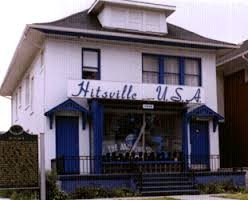
Berry Gordy, Jr, founder of Motown Records, along with his sister Esther Gordy Edwards, founder of the Motown Museum

The Supremes rehearsing at the Motown studio
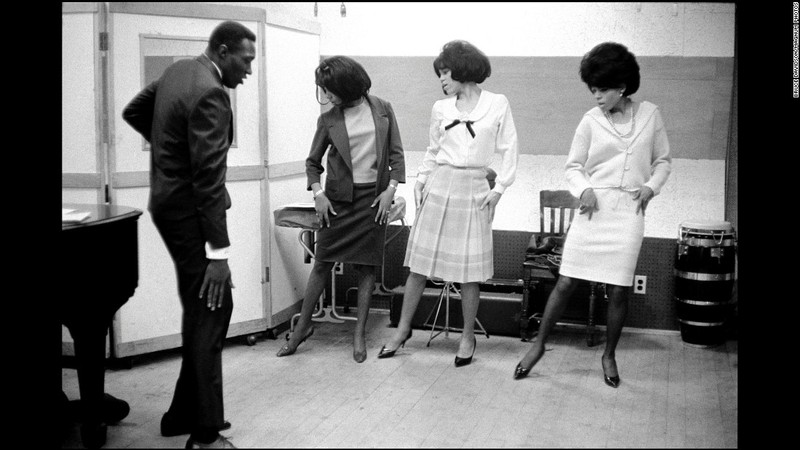
Stevie Wonder recording in Studio A
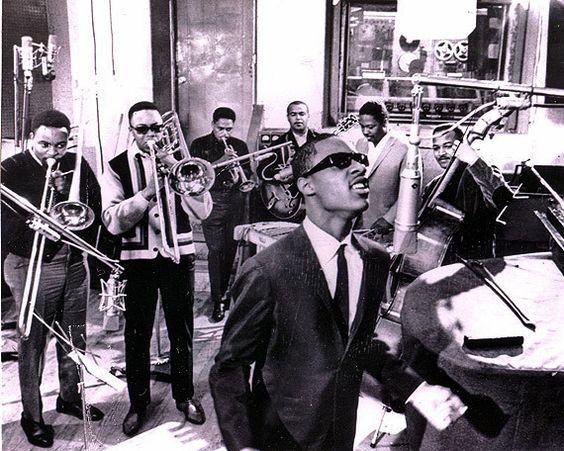
Studio A today, with the original equipment
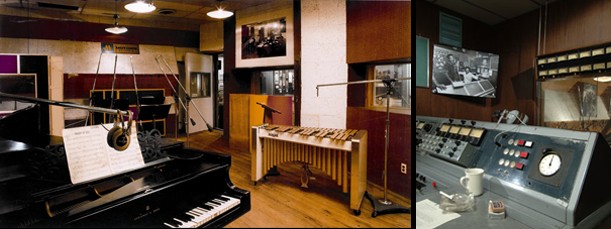
Outside the Motown Museum
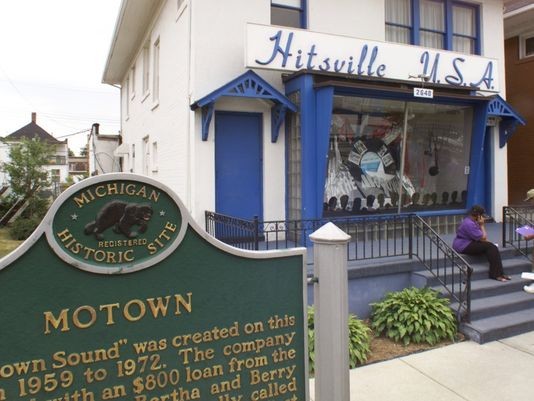
Backstory and Context
Text-to-speech Audio
Berry Gordy, Jr. was born in Detroit in 1929 and had an interest in music from a young age. When he was 27, he quit his job on the assembly line at Lincoln-Mercury to pursue a career in songwriting. His first successful song was Jackie Wilson’s hit “Reet Petite.” Gordy soon decided to start his own record company and borrowed $800 from his family to form Tamla Records in 1959. On April 14, 1960, Gordy incorporated Motown Record Corporation, coining a term that reflected the Motor City nickname for Detroit. He began working with friend Smokey Robinson’s group, The Miracles, and their recording of “Shop Around” became Motown Records’ first Top 10 hit the same year.1
Gordy set up his recording headquarters in a home on West Grand Boulevard that he called Hitsville, USA, living in the upstairs apartment with his young family. He began taking on new talent, and some of the early performers who recorded with Motown included Mary Wells, The Temptations, The Supremes, and Stevie Wonder (then an 11-year-old prodigy). With Gordy’s direction, the company developed the “Motown Sound,” a mix of gospel, rhythm and blues, and pop. With the Civil Rights Movement raging in the 1960s, Gordy saw an opportunity for African-American performers to appeal to a broader white audience. Motown Records would become the largest Black-owned company in the United States and the most successful independent record label in the industry.1
In Sound of the City: The Rise of Rock & Roll, Charlie Gillett writes that,
The Motown Museum was opened in 1985 by Gordy’s sister Esther Gordy Edwards. When Motown Records moved their headquarters, Edwards, who had been Senior Vice President, stayed to run a corporate office out of the original Hitsville, USA building. According to the museum’s website, “As she worked, people would knock on the door, asking to ‘take a peak’ at Studio A, the original Motown recording studio where their favorite songs had been recorded. Ever gracious, Mrs. Edwards would stop working and take these uninvited, but nonetheless welcomed, guests on an impromptu tour of the facility. It soon occurred to her, after eventually touring thousands of people from around the world, that the building at 2648 West Grand Boulevard, Hitsville, USA, had become a monument to the music Motown created."3
The museum preserves Motown’s legacy and encompasses a vast collection of memorabilia from the era. It was renovated with a new gallery space, offices and the upper apartment where Gordy lived was restored. Awestruck visitors can see the Studio A space where dozens of artists recorded the most famous Motown songs. The studio and control room still contain original instruments and equipment. The collection includes clothing, photographs, records, and promotional items. The museum has drawn international visitors since it opened, including many musical artists who come to pay their respects to the Motown legacy. On display are a hat and sequined glove donated by Michael Jackson that he wore the first time he did his famous moonwalk dance at the Motown’s 25th anniversary. In 2011, Paul McCartney visited the museum and learned that the 1877 Steinway grand piano that was used in the recording studio was no longer functioning, so he paid to have it repaired.
Gordy set up his recording headquarters in a home on West Grand Boulevard that he called Hitsville, USA, living in the upstairs apartment with his young family. He began taking on new talent, and some of the early performers who recorded with Motown included Mary Wells, The Temptations, The Supremes, and Stevie Wonder (then an 11-year-old prodigy). With Gordy’s direction, the company developed the “Motown Sound,” a mix of gospel, rhythm and blues, and pop. With the Civil Rights Movement raging in the 1960s, Gordy saw an opportunity for African-American performers to appeal to a broader white audience. Motown Records would become the largest Black-owned company in the United States and the most successful independent record label in the industry.1
In Sound of the City: The Rise of Rock & Roll, Charlie Gillett writes that,
“Although Gordy showed an outstanding flair for combining good business sense with a seemingly infallible instinct for new, commercial sounds, perhaps his most important ability was his gift for recognizing good performers, writers, producers, and musicians, and for inspiring them to fulfill their potential. Within four years of forming his company, Motown had ten performers capable of making the pop market's top ten, any one of whom could compare with the best singer any other company could offer. Yet none had any kind of reputation before Gordy signed them. […] The system enabled the Motown Corporation to have an unparalleled ten-year run in the singles market, with 79 records making the top ten."2Just five years after forming, Motown Records was bringing in $15 million. The Studio A space where musicians recorded their Motown hits was open and running for 24 hours. Around 75% of its releases made it into the charts, from artists such as The Four Tops, Marvin Gaye, Gladys Knight & The Pips, The Jackson 5, and Lionel Ritchie. Motown Records moved its headquarters from Hitsville, USA to a larger building on Woodward Avenue in 1968 and then to Los Angeles in 1972. Around this time, Gordy was dealing with disgruntled singers and songwriters who felt that their contracts under Motown were very unfair; some of these disagreements developed into lawsuits and the departure of the artists. Gordy sold Motown Records to MCA in 1988 for $61 million.1
The Motown Museum was opened in 1985 by Gordy’s sister Esther Gordy Edwards. When Motown Records moved their headquarters, Edwards, who had been Senior Vice President, stayed to run a corporate office out of the original Hitsville, USA building. According to the museum’s website, “As she worked, people would knock on the door, asking to ‘take a peak’ at Studio A, the original Motown recording studio where their favorite songs had been recorded. Ever gracious, Mrs. Edwards would stop working and take these uninvited, but nonetheless welcomed, guests on an impromptu tour of the facility. It soon occurred to her, after eventually touring thousands of people from around the world, that the building at 2648 West Grand Boulevard, Hitsville, USA, had become a monument to the music Motown created."3
The museum preserves Motown’s legacy and encompasses a vast collection of memorabilia from the era. It was renovated with a new gallery space, offices and the upper apartment where Gordy lived was restored. Awestruck visitors can see the Studio A space where dozens of artists recorded the most famous Motown songs. The studio and control room still contain original instruments and equipment. The collection includes clothing, photographs, records, and promotional items. The museum has drawn international visitors since it opened, including many musical artists who come to pay their respects to the Motown legacy. On display are a hat and sequined glove donated by Michael Jackson that he wore the first time he did his famous moonwalk dance at the Motown’s 25th anniversary. In 2011, Paul McCartney visited the museum and learned that the 1877 Steinway grand piano that was used in the recording studio was no longer functioning, so he paid to have it repaired.
Sources
1. Kettler, Sarah. "Berry Gordy Jr. Biography." The Biography.com Website. Accessed July 22, 2016. http://www.biography.com/people/berry-gordy-jr-9316017
2. Gillett, Charlie. "The Sound of the City: The Rise of Rock & Roll." London: Souvenir Press, 2011. 3. "About the Museum." The Motown Museum Official Website. Accessed July 22, 2016. https://www.motownmuseum.org/about-the-museum/
2. Gillett, Charlie. "The Sound of the City: The Rise of Rock & Roll." London: Souvenir Press, 2011. 3. "About the Museum." The Motown Museum Official Website. Accessed July 22, 2016. https://www.motownmuseum.org/about-the-museum/
